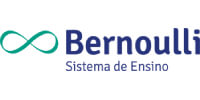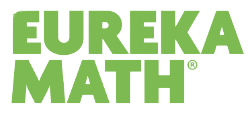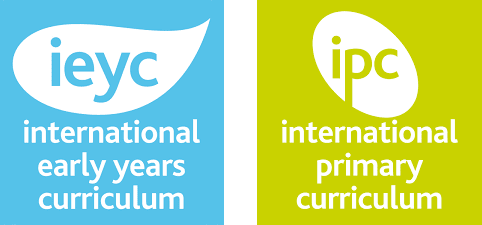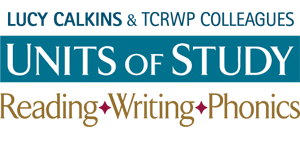1. When studying at EAV, will my child be giving up his Brazilian culture?
Escola Americana de Vitória is an international and national curriculum school, open to the world and located in Brazil. For this reason, valuing national/local culture is fundamental for us. Our workload includes teaching Portuguese in all grades. From the final steps of Elementary School onwards, geography and history curricula are also taught in Portuguese. There is an alignment between the National Curricular Common Base (BNCC) and international learning expectations. We have an axis of Brazilian and international electives taught in Portuguese and English. National and international dates are observed and celebrated at EAV. And our technical staff (teachers, coordinators, and administrators) is multinational.
2. Is EAV a franchise?
No, the American School of Vitória is a school established in Vitória/ES with an international methodology, that is, the school uses international curricula in addition to immersion in the English language. EAV was formed by pedagogues and entrepreneurs and had the Buaiz Group as its maintainer.
3. Is learning a foreign language simultaneously with learning the native language a gain or a risk?
Learning an additional language to the native language is always a gain. Several studies point to children’s innate readiness to learn. Neural plasticity, which is our brain’s ability to remodel itself, is more pronounced in children. Recent studies, such as the one carried out by the Institute of Brain and Learning Sciences at the University of Washington, reveal that the “magical period for learning a language is until age 7”. There are many collateral gains for an individual who learns an additional language from childhood. Neuroscience has also proven how creative, empathetic, and flexible a bilingual being is. Several studies also prove a marked gain in the so-called executive functions of the brain since a bilingual being is in a constant state of negotiation of meaning. Therefore, working on acquiring knowledge and skills through the lingua franca and the mother tongue favors the insertion of children and young people in an increasingly interconnected world.
4. My son does not want to study abroad. Can studying at EAV reduce your chances of passing entrance exams in Brazil?
As we are a 100% full-time school, our workload ensures a balance between international and Brazilian government requirements. As of 2022, all schools in Brazil started to adopt a new High School, with the proposal of greater integration between the subjects and possibilities of choice on the part of the students, following a model already adopted for decades in American and European schools. Through the training itineraries, students will be able to choose disciplines and courses that communicate with their areas of interest. It is important to emphasize that at EAV, we have worked with active methodologies since Early Childhood Education, integrating skills and knowledge and aligning scientific and social understanding, providing a contemporary identity to our young people. The cultural additions inherent to a curriculum in which international learning expectations align with national ones guarantee high school students at EAV a differential in their ability to mobilize and integrate knowledge, which constitutes a fundamental pillar in the new high school.
For more specialized selection processes, EAV will offer intensive programs aimed at this group based on our students’ profile analysis.
5. If my child chooses an itinerary in New High School, how can he adjust the route if he changes his mind about his career choice? Is there a deadline for this adjustment?
The itineraries are not directly related to specific content but to areas of knowledge/career that use High School content. They can change every semester. The offers of the itineraries will be made based on the students’ interest surveys.
6. Are electives and itineraries the same thing? How should students choose electives? To deepen or expand?
No. The training itineraries are the set of subjects, projects, workshops, study centers, and other work situations that students can choose from in high school. The training itineraries can deepen the knowledge of an area of expertise (Mathematics and its Technologies, Languages and its Technologies, Natural Sciences and its Technologies and Applied Human and Social Sciences) and technical and professional training (FTP) or even the knowledge from two or more areas and from FTP.
Electives are subjects chosen by students that aim to enhance students’ training, deepening the knowledge acquired in an interdisciplinary way based on students’ needs and interests.
7. How will the preparation for university studies abroad be done for students who contemplate this project?
Students will be guided from the 9th grade of Elementary School in Brazil (the first year of High School in the United States) through collective and individual meetings aimed at career development, lectures, and workshops on studies abroad, in addition to having access to summer camps and internship projects throughout High School. The EAV team will also guide students through the process of choosing a country and universities, directing them to the tests and specific requests in the application processes and defining with the students the strategies to be adopted.
8. How are Students Evaluated at EAV?
At EAV we do not grade students in a traditional manner using a 1-10 scale, percentages, or A,B,C,D (etc). AT EAV we evaluate and report student learning using a standards based approach. Standards Based Grading (SBG) is a system that evaluates students’ progress towards mastering specific learning targets called standards. EAV we use standards from BNCC, as well as the Common Core Standards from the United States.
Standards-based grading involves the evaluation of each student’s understanding of each and every grade level related standards. This is done using rubrics built on a scale of N,B,D,M,I
I = Innovating (Performing beyond Grade Level Standard)
M = Mastering (Mastery of Grade Level Standards Achieved)
D = Developing (Student is growing towards Mastery of the standard)
B = Beginning (Student has begun learning components of mastery needed)
N = No Evidence (There is lacking or insufficient evidence of the students work)
The purpose of standards based grading is to give a clearer picture of a student’s learning progress. Instead of a traditional points gradebook where you see a single letter grade, an SBG report card gives a detailed view of student strengths and weaknesses. Traditional grading communicates on a high level, whereas standards based grading provides detailed and actionable insights.
9. What are the school hours?
PRESCHOOL: 8am to 3:15pm – snack time: 3:15 to 3:25pm
ELEMENTARY, MIDDLE & HIGH SCHOOL: 8am to 3:50pm – snack time: 3:50 to 4:00pm
10. Can I enroll my child(ren) only in the morning shift or in the afternoon shift?
No, because EAV works with American school hours, that is, full-time hours, as detailed in the previous question.
11. My child doesn’t speak English? What kinds of support are offered at EAV to help them develop their English?
At EAV we evaluate each student’s English language levels using the WIDA Model (Measure of Developing English Language) Assessment. This assessment is used in international schools around the world to identify the English Language Level of students at various age levels. At EAV we take the data from this assessment to identify the students who need English Language Learning (ELL) support. Students identified for ELL support will work with one of our ELL specialized teachers to continue developing their English Language speaking, listening, and writing skills in small group settings until they can fully accompany and participate in the learning happening in all of our classrooms. Currently, we have 3 ELL teachers working with students from 1st-9th grade.
12. Do students at EAV get homework?
Pre-School students in Nursery-Kindergarten do not get homework to do outside of school hours. However, teachers on occasion may provide students with an option to finish an activity at home.
Elementary students in 1st-5th grade do not get homework to do outside of school hours. Teachers on occasion may provide students with an option to finish an activity at home, but no formal homework will be sent home for them to complete.
However, our school does encourage parents to develop a routine of reading at least three times per week for 20-30min, either on our RAZ kids or Arvore online platforms. We also encourage families to have students in this division work on our online math platform Zern for 20-30min twice a week.
Middle & High School students do have homework on a regular basis. As we help students in these age groups develop responsibility, time management, and organizational skills; homework plays a critical role in this work.
13. How does a student get Alphabetized in English and in Portuguese? Do they get confused by this?
At EAV we pride ourselves on being an English Immersion school where our students learn their alphabet and how to read and write in both English and in Portuguese. Students at our school do this in both languages and research show that there are significant long term academic gains in terms of literacy and language development through this approach.
14. Do students get lunch and snacks at school and what does this look like in PS, ES, MS/HS?
All EAV students get a Morning Snack, a lunch, and an afternoon snack before departing for home. These are provided by the school and included in the school contract.
15. Is there a tolerance for leaving school? If the parent cannot pick up, how is the situation handled?
After the school shift, Escola Americana de Vitória offers students the After School Program, with activities that develop skills such as empathy, concentration, discipline and responsibility.
These extracurricular activities contribute even more to the socio-emotional training of students, as they allow the promotion of self-knowledge, socialization, self-esteem and, as a result, a healthier life.
Our offer of activities includes modalities of sports, music, and dance, they are:
- Basketball
- Capoeira
- Caregiver
- Futsal
- Judo
- Rhythmic Gymnastics
- Soccer
- Swimming
- Tennis
- Volleyball









